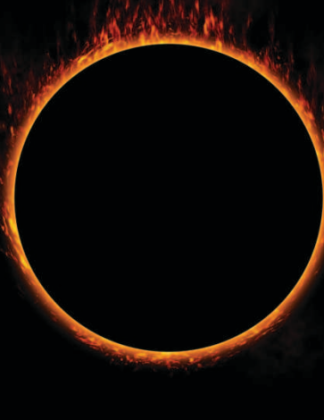‘Ring of fire’ phenomena happens Saturday
Let’s just say, it ain’t just a Johnny Cash song anymore.
That’s because on Saturday, Oct. 14, eclipse watchers will be treated phenomena known as the “Ring of Fire” where, for ever so brief a moment, the sun becomes halo of reddish-golden light as the moon passes between sun and earth in a partial eclipse.
Not everyone, however, will get to see it, according to Joe Rao, an esteemed astronomer who writes for Space.com, Sky & Telescope, and Natural History Magazine. That’s because it only occurs in a narrow path that stretches from the northern Pacific to the Atlantic. Just 135 miles wide, that path stretches through Oregon, California, Nevada, Utah, Arizona, Colorado, New Mexico, and Texas before passing to Central and South America.
Major cities listed in the Texas path’s optimal viewing zones include Midland, San Antonio, and Corpus Christi, so there’s a good chance our area lies within that prime viewing area as well. Expect it here just before noon on Oct. 14 (11:43 a.m. in Midland, 11:52 a.m. in San Antonio, and 11:55 a.m. in Corpus). It should be visible for about 5 minutes, barring any cloud cover. The last time this occurred in the United States was in 2012.
So, why a ring of fire? It has to do with the moon being far away from the earth, Rao says.
The moon will be about four days past apogee (the moon’s farthest point from the earth in its orbit), so it will appear slightly smaller than usual. For this reason, it will leave a ring of light around the sun as it crosses in front of it. The ring will shine with only one-tenth of the sun’s normal total light, but this is less of a change than it sounds, since the eye adapts readily to changing light levels. The illumination will be no darker than on a bright overcast day. The quality of the light, however, may become unearthly. Clear skies tend to turn deep blue, and landscapes become oddly silvery.
Venus may become briefly visible at about 46 degrees above and to the right of the sun. (Your clenched fist held at arm’s length measures roughly 10 degrees, so Venus will be positioned about four and a half “fists” to the Sun’s upper right.) You can simply block the sun with your hand to search for it. Amateur astronomers be forewarned: You’ll need solar eclipse glasses to view it because a “ring of fire” is not safe to look at with the naked eye at any time. Find glasses online and at select retailers.


